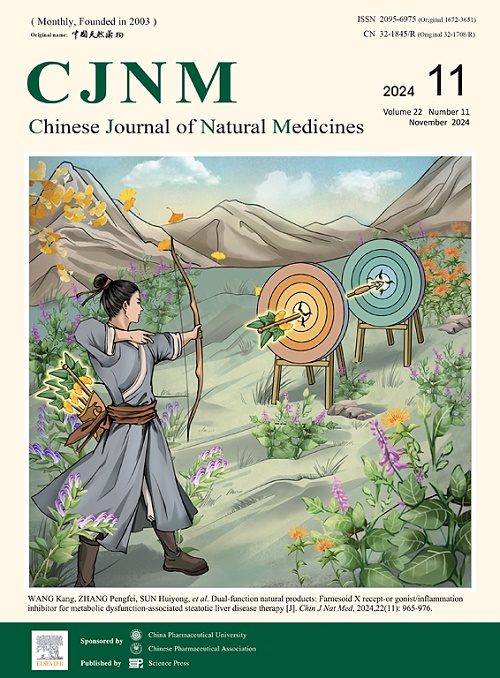Oroxylin A通过调节XPA降解抑制uvb诱导的非黑色素瘤皮肤癌
IF 4.9
2区 医学
Q1 INTEGRATIVE & COMPLEMENTARY MEDICINE
引用次数: 0
摘要
Oroxylin A (OA)是一种从黄芩中提取的天然化合物,对紫外线B (UVB)诱导的非黑色素瘤皮肤癌(NMSC)具有潜在的预防作用,NMSC是世界上最常见的癌症,发病率不断上升。利用暴露于UVB的SKH-1无毛小鼠,本研究表明OA延缓了NMSC的发生并减轻了急性皮肤损伤。机制研究揭示了其双重作用:抑制炎症和通过稳定XPA(一种关键的脱氧核糖核酸(DNA)修复蛋白)来增强核苷酸切除修复(NER)。这种稳定是通过OA与葡萄糖调节蛋白94 (GRP94)的相互作用发生的,这破坏了小鼠双分钟2 (MDM2)介导的XPA泛素化和蛋白酶体降解。通过维持XPA水平,OA加速了光产物清除,减少了基因组不稳定性,最终阻碍了NMSC的发展。这些发现表明OA是一种很有前景的化学预防剂,可以靶向GRP94/MDM2-XPA轴来对抗uvb诱导的致癌作用。本文章由计算机程序翻译,如有差异,请以英文原文为准。
Oroxylin A inhibits UVB-induced non-melanoma skin cancer by regulating XPA degradation
Oroxylin A (OA), a natural compound extracted from Scutellaria baicalensis, demonstrates preventive potential against ultraviolet B (UVB)-induced non-melanoma skin cancer (NMSC), the most prevalent cancer worldwide with increasing incidence. Utilizing SKH-1 hairless mice exposed to UVB, this study showed that OA delayed NMSC onset and alleviated acute skin damage. Mechanistic investigations revealed its dual action: inhibiting inflammation and enhancing nucleotide excision repair (NER) by stabilizing XPA, a crucial deoxyribonucleic acid (DNA) repair protein. This stabilization occurred through OA’s interaction with glucose-regulated protein 94 (GRP94), which disrupted murine double minute 2 (MDM2)-mediated XPA ubiquitination and proteasomal degradation. By maintaining XPA levels, OA expedited photoproduct clearance and diminished genomic instability, ultimately impeding NMSC development. These findings suggest OA as a promising chemopreventive agent targeting the GRP94/MDM2-XPA axis to counteract UVB-induced carcinogenesis.
求助全文
通过发布文献求助,成功后即可免费获取论文全文。
去求助
来源期刊

Chinese Journal of Natural Medicines
INTEGRATIVE & COMPLEMENTARY MEDICINE-PHARMACOLOGY & PHARMACY
CiteScore
7.50
自引率
4.30%
发文量
2235
期刊介绍:
The Chinese Journal of Natural Medicines (CJNM), founded and sponsored in May 2003 by China Pharmaceutical University and the Chinese Pharmaceutical Association, is devoted to communication among pharmaceutical and medical scientists interested in the advancement of Traditional Chinese Medicines (TCM). CJNM publishes articles relating to a broad spectrum of bioactive natural products, leading compounds and medicines derived from Traditional Chinese Medicines (TCM).
Topics covered by the journal are: Resources of Traditional Chinese Medicines; Interaction and complexity of prescription; Natural Products Chemistry (including structure modification, semi-and total synthesis, bio-transformation); Pharmacology of natural products and prescription (including pharmacokinetics and toxicology); Pharmaceutics and Analytical Methods of natural products.
 求助内容:
求助内容: 应助结果提醒方式:
应助结果提醒方式:


